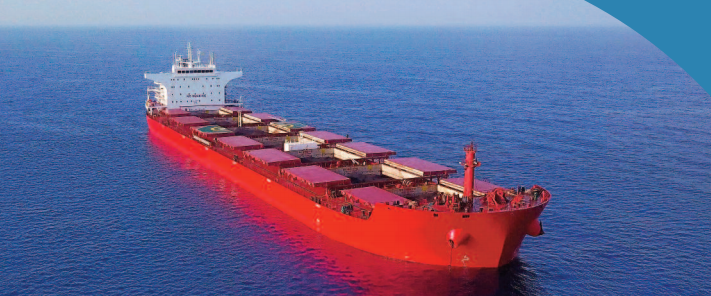In an effort to promote safety at sea, the Swedish Club issued a new casebook, which describes factors that can lead to common incidents, while shares their lessons learned.
In the first incident of the casebook, the club focuses on a case where leaking cargo hatch covers caused cargo damage.
The case
A bulk carrier had been fully loaded with grains. The vessel had side rolling cargo hatch covers. For six days, the vessel encountered heavy weather at Beaufort scale 9 which caused it to pitch and roll heavily.
During the voyage the cargo hatch covers were washed over by seawater.
Hatch covers were opened
When the vessel was at anchor and waiting for an available berth all the hatch covers were opened. This was to ensure the vessel was gas free since fumigation had been carried out in all cargo holds at the loading port.
Whilst opening the cargo hatch covers it was found that cargo in a number of holds had been damaged by water. Most of the water-damaged cargo was below the middle cross joint of the hatch covers and below the aft hatch coaming’s corners.
Findings
According to the Master there had not been any ventilation to the cargo holds during the voyage.
A surveyor carried out an inspection and found the following hatch cover parts to be in poor condition:
- Hatch cover panels
- Hatch coamings
- Water drain channels
- Non-return valves
- Quick cleats
- Rubber gaskets
The survey indicated that seawater had leaked through the middle cross joint drain channel and through the corner of the hatch coamings.
Lessons learned
- Before loading, completion of loading and after discharge, the crew should inspect the hatch covers to ensure they are in a weathertight condition. It is essential that cargo hatch covers are inspected and tested at regular intervals to ensure that the weathertight integrity is maintained, and that the vessel is in a cargo worthy and seaworthy condition.
- Ensure that gaskets and coamings are in good condition.
- It is important that records are kept about what maintenance and service has been completed in the PMS.
- Inspection of cargo hatches and coamings, including securing devices, is part of both the annual load line survey and safety construction survey normally carried out by the vessel’s classification society. The main purpose of these inspections is to ensure that the vessel is in a seaworthy condition, and not necessarily to confirm that the vessel is in a ‘cargo worthy’ condition.
- A few tons of water in the cargo hold will not jeopardise the seaworthiness, but it might completely destroy the cargo.
- Carry out a weathertightness test at least annually and always after repairing or replacing components in the cargo hatch system.
- When carrying watersensitive cargo such as grain, soyabeans, paper, etc. it is recommended that weathertightness is tested before each loaded voyage. The most effective method is to use an ultrasonic device, which can pinpoint the area which is leaking, and if the compression of the gasket is sufficient.
- The advantages of using this type of equipment are evident, since ultrasonic tests can be carried out during any stage of the loading without risking cargo damage. The test can also be completed in sub-zero temperatures.






























































